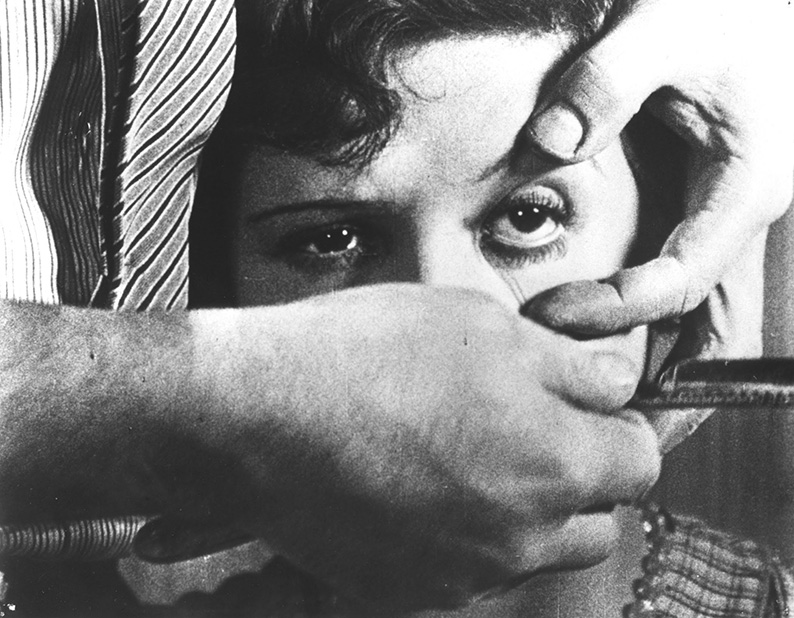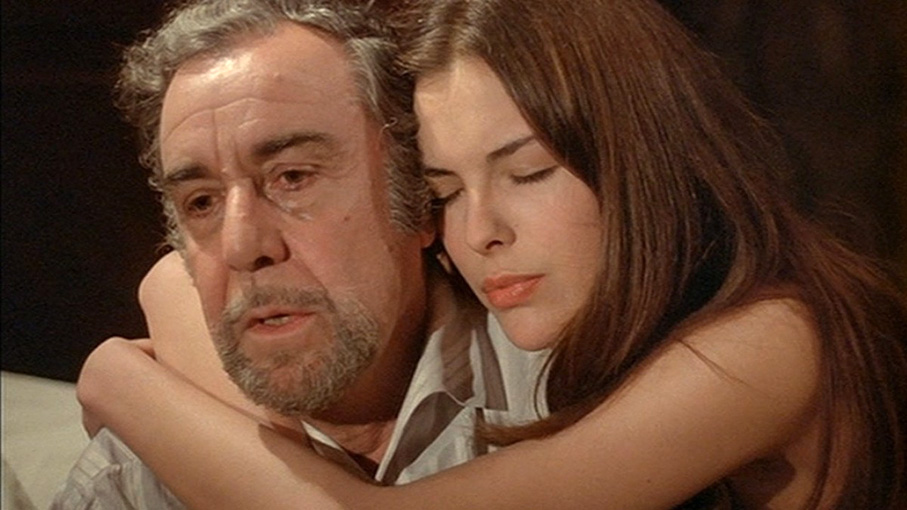Yesterday, I posted a review for the Blu-ray in Eureka's dual format release of Death in the Garden, a work from director Luis Buñuel's late Mexican period and the middle film in a trilogy of Franco-Mexican co-productions made in the 1950s that began with That is the Dawn and concluded with Nazarin. It's a hell of a film – read the review to get an idea why – but it did make me wonder why so few Buñuel films have made their way onto UK Blu-ray, given the seriously high regard in which this singular filmmaker is held. It also prompted me to recall how I first became acquainted with his work through two films from the opposite ends of his career.

My first taste of what I later learned was Un Chien Andalou, Buñuel's still confrontational 1929 short film collaboration with fellow Spanish émigré Salvador Dali, came during an art history class, when the film's notorious opening sequence was included in a documentary on surrealism but concluded just before the shot that still has the power to make even grown men go weak at the knees. The build-up to this moment, albeit artificially enhanced by the sinister electronic music that had replaced the original Argentinean tango, had my stomach in knots. I'd already fallen head over heels in love with surrealism as an art form by then, and despite my apprehension over how I would react, I desperately wanted to see what came next. The opportunity soon presented itself on a trip to the Tate Gallery in London, during which the film was screened in one of the side rooms. I was absolutely stunned. What remains one of the single most shocking opening sequences in cinema history was just the first cannonade of what remains the definitive surrealist short film, one whose imagery and ideas burrowed deeply into my brain and massively impacted on my appreciation and understanding of the film form. The first 8mm film I made with a fellow student at art school was hugely influenced by it, being constructed from a series of disconnected surrealistic sequences that were partially drawn from our own dreams and nightmares. It was a hit with our fellow students at the end of year show, but I'm not sure I'd want to show it to anyone now, even if still I had a copy. It did, however, get me into film school.
The next logical Buñuel film to see would have been his 1930 L'Age D'Or, a near feature-length extension of ideas and imagery from Un Chien Andalou and his first fully fledged solo project (Dali's involvement was minimal here), but back then this meant finding a cinema or gallery somewhere that was screening it and making your way there. I thus had to live with just reading about Buñuel and hoping that the chance to see more of his films would present itself. It was to be another two years before this happened, when his 1977 That Obscure Object of Desire [Cet obscur objet du désir] was screened at a single cinema in London (the Academy, if I remember correctly). Little did I realise as I bought my ticket that this was to be Buñuel's final film. But there was more. Having rather foolishly formed an opinion of what constitutes a Buñuel film based solely on the provocative experimentation of Un Chien Andalou (come on, I was still an impressionable teenager at this point), I was ill prepared for what That Obscure Object of Desire had to offer. I had failed to take on board the fact that in the 48 years that had passed since that debut, Buñuel had directed 34 more films, this one included, during which time his approach and technique had both undergone some significant changes. What I got was not the fearless young agitator of the 1920s and 30s Surrealist movement, but a playful and imaginative dramatist whose filmmaking had become almost invisible and whose surrealism did not violently confront but grew organically out of the everyday and the ordinary. I wasn't ready for that. I left the cinema more than a little confused, a state of mind enhanced by Buñuel's decision to have one of the film's characters played by two different actresses. For me at this shallow age, Un Chien Andalou and That Obscure Object of Desire felt like works from two very different filmmakers.

But That Obscure Object of Desire stayed with me nonetheless, and a couple of years later I was able work my way backwards through Buñuel's later works thanks to a season of his films at the National Film Theatre (now BFI Southbank), and it was here that my passion for Un Chien Andalou evolved into a love of Buñuel's cinema in general. But there remained a filmography gap. Now that I was based close to London, Un Chien Andalou and L'Age d'Or were notorious enough for me to be able to track down, and you could rely on independent cinemas like the Scala to screen double-bills of his celebrated later films – I still keenly remember a rainy afternoon spent in the fine company of Belle de jour and Simon of the Desert. What was missing were screenings of the films Buñuel made in Mexico during the 1950s, several of which you'll still struggle to see to this day. There is one famous exception, of course, and if you've never seen Los olvidados then close this browser window right now and track it down – it's a brutal and brilliant slice of social realism whose astonishing dream sequence just has to have been an influence on the look and feel of David Lynch's own startling surrealistic feature debut, Eraserhead.
One key thing about both Los olvidados and Death in the Garden is that they remind you that Buñuel was not just the godfather of cinematic surrealism, but a fiercely intelligent and gifted filmmaker and great storyteller. And for me, at least, he is one of those filmmakers whose every work usually proves dangerously infectious – watch one Buñuel film – pretty much any Buñuel film – and I immediately start wanting to (re-) watch all the others. Time to dig out a few of my older DVDs, methinks. |